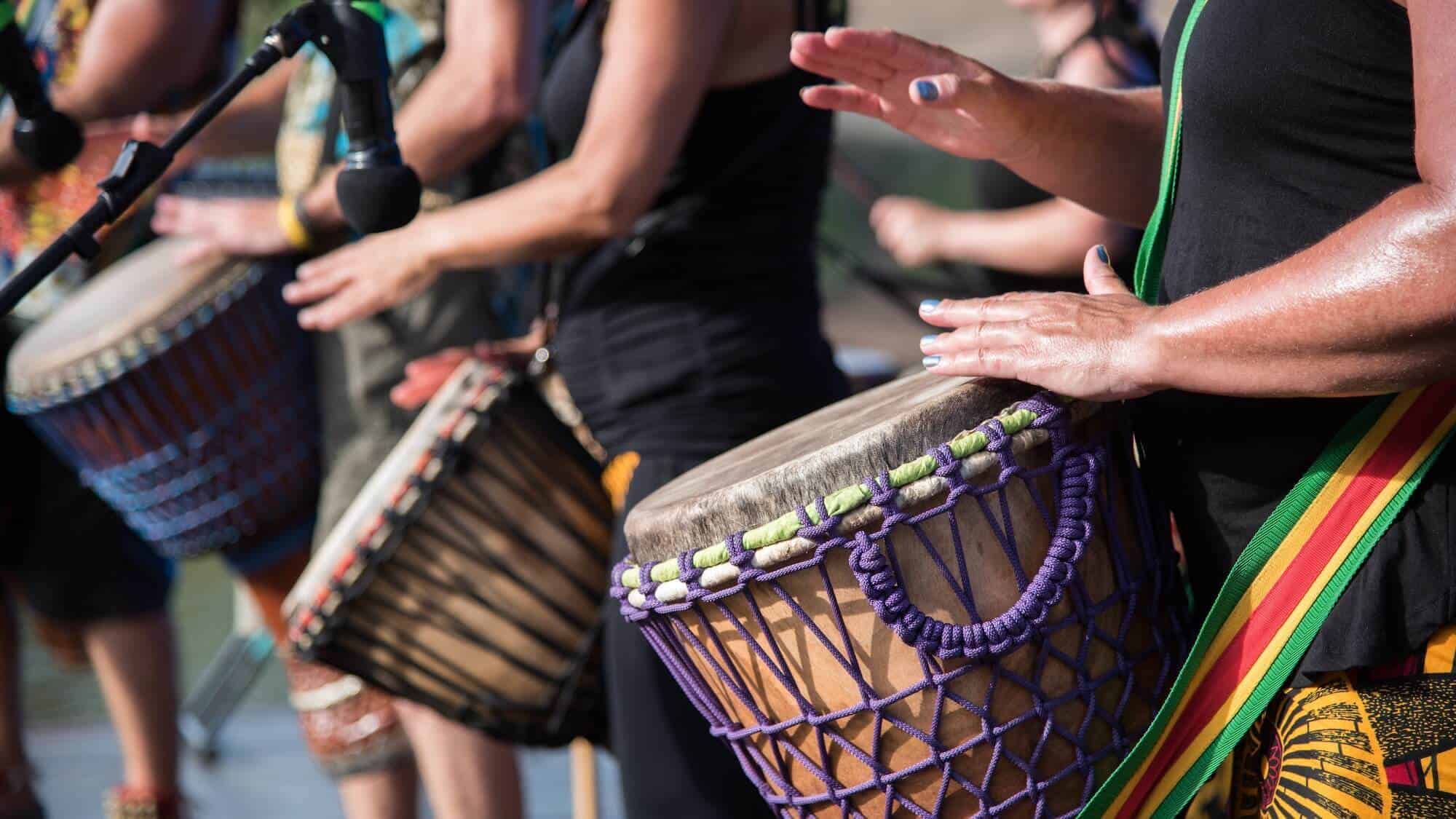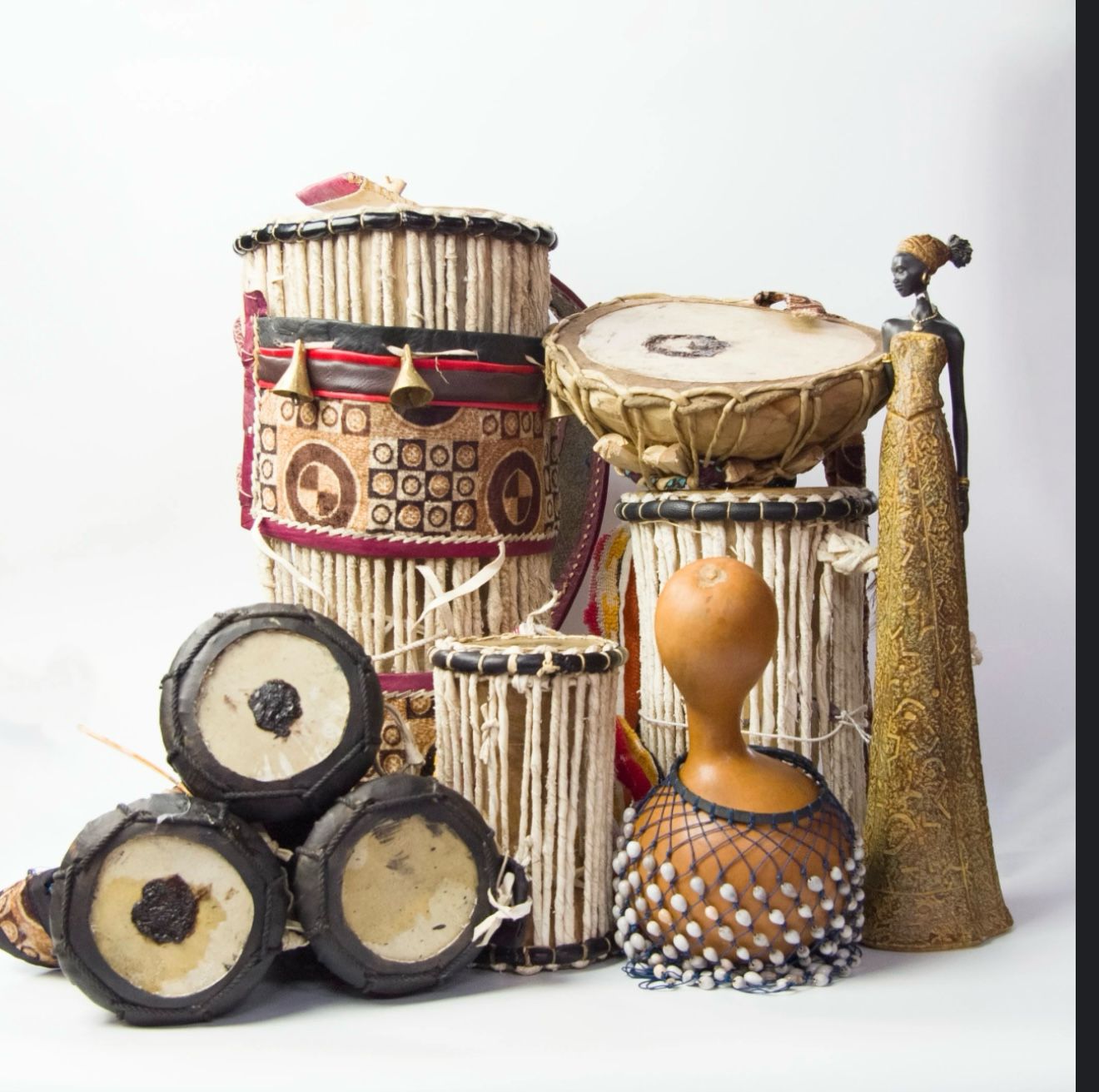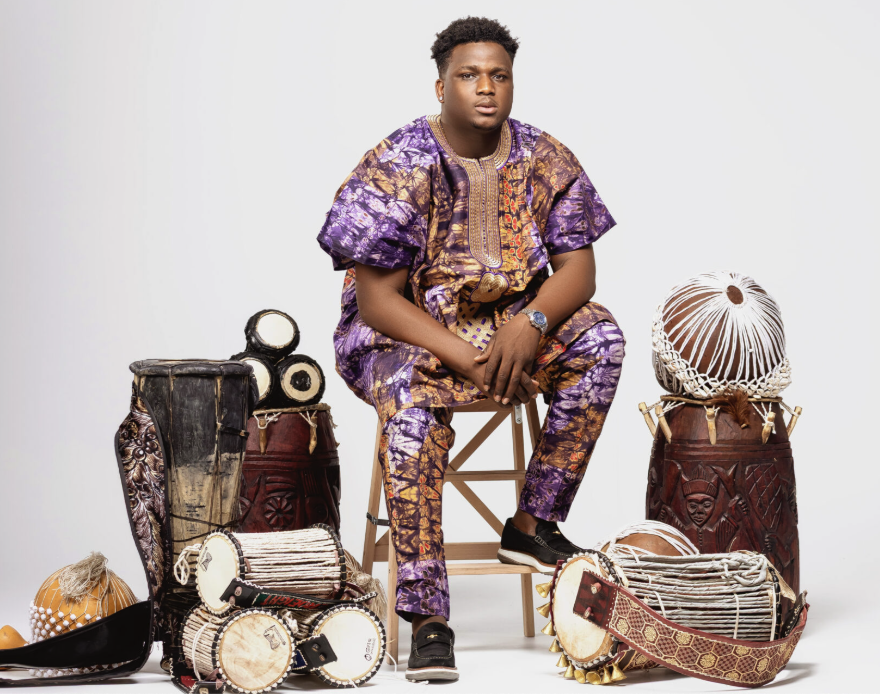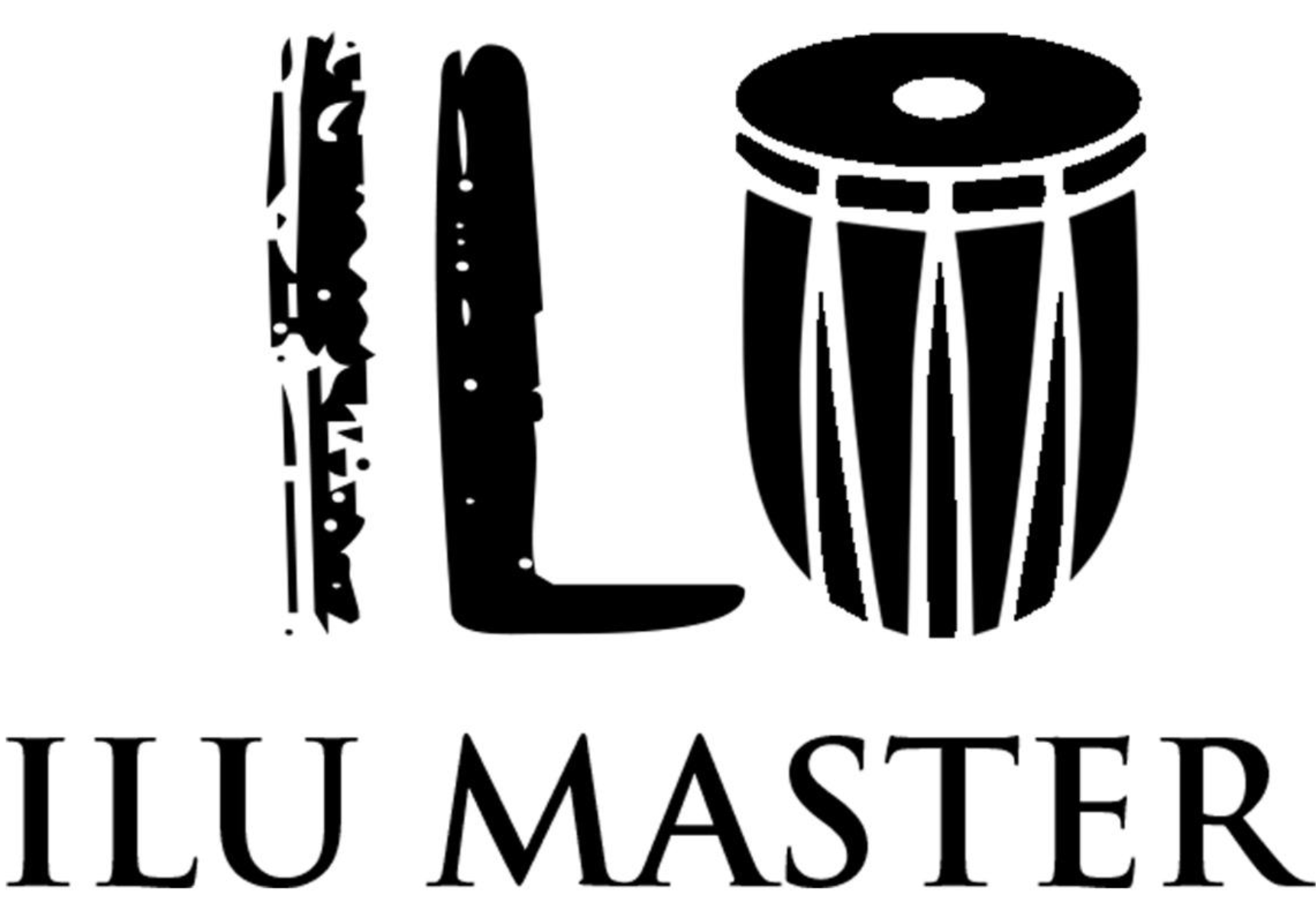Your cart is currently empty!
History of the talking drum
The talking drum is an integral part of Nigerian culture, particularly among the Yoruba people of southwestern Nigeria and Benin. This hourglass-shaped drum has a rich history dating back to the 18th century, with its origins tracing back to the Bono people, Yoruba people, Ghana Empire, and Hausa people.
Early Use and Significance
Historically, the talking drum was used as a means of non-verbal communication, conveying messages across vast distances. Its unique ability to mimic human speech allowed drummers to send messages, tell stories, and even issue commands. The drum’s pitch is varied to mimic the tone patterns of speech, achieved by adjusting the tension cords connecting the two drumheads.

Cultural and Social Significance
In Yoruba culture, the talking drum is highly revered and plays a significant role in various ceremonies and events, such as:
• Ceremonial activities: weddings, burial ceremonies, and private functions
• Communication: sending messages across villages, praising kings, and inspiring communities
• Storytelling: conveying complex messages and telling stories through drum language
Playing Styles and Regional Variations
Different regions have distinct playing styles, with the Yoruba and Dagomba people having some of the largest talking drums. The playing style in eastern Mali, Burkina Faso, and Ghana is characterised by long, sustained notes, while in western regions like Senegal and Gambia, rapid rolls and short bursts of sound are more common.
Preservation and Evolution
Efforts are being made to preserve the talking drum’s traditional language and playing styles, as modernisation and cultural exchange have led to changes in its use and interpretation. Organisations like the IROKO Theatre Company in London work to promote African culture and arts, including the talking drum, through education and community engagement.
Notable Musicians and Modern Usage
The talking drum has been featured in various musical genres and collaborations, including:
• King Crimson: used the talking drum in their album “Larks’ Tongues in Aspic.”
• Tom Waits featured the talking drum in his song “Trouble’s Braids”
• Erykah Badu: used the talking drum in her song “My People”
• Sikiru Adepoju: a renowned Nigerian talking drummer who has collaborated with artists like Stevie Wonder and Carlos Santana.

The talking drum is an important cultural symbol and tool for communication, storytelling, and artistic expression in Nigeria and beyond.
African Persecution and the Nigerian Talking Drum: Brief History of African Persecution
African persecution has a complex and painful history, with various forms of oppression and violence inflicted upon different groups and communities. Traditional African religions have faced persecution from Christians and Muslims, leading to the destruction of sacred places, killings, and other atrocities.
Nigerian Talking Drum’s Impact
Cultural Preservation and Education
The Nigerian talking drum plays a significant role in preserving cultural heritage and educating the youth about their roots. By learning to play the drum, young people can gain a deeper understanding of their cultural history and traditions.
Community Building and Social Cohesion
The talking drum has the power to bring communities together, fostering social cohesion and a sense of belonging. Drumming sessions and performances can serve as a platform for community members to come together, share experiences, and build relationships.

Personal Development and Empowerment
Learning to play the talking drum can have a positive impact on young people’s personal development, teaching them discipline, creativity, and self-expression. The drum can also serve as a tool for empowerment, helping young people build confidence and self-esteem.
Promoting Cultural Exchange and Understanding
The Nigerian talking drum can facilitate cultural exchange and understanding between different communities. By sharing their cultural heritage with others, young people can promote cross-cultural understanding and appreciation.
In summary, the Nigerian talking drum is a powerful tool for cultural preservation, community building, personal development, and cultural exchange. Its rich history and cultural significance make it an invaluable asset for the youth and the community.
